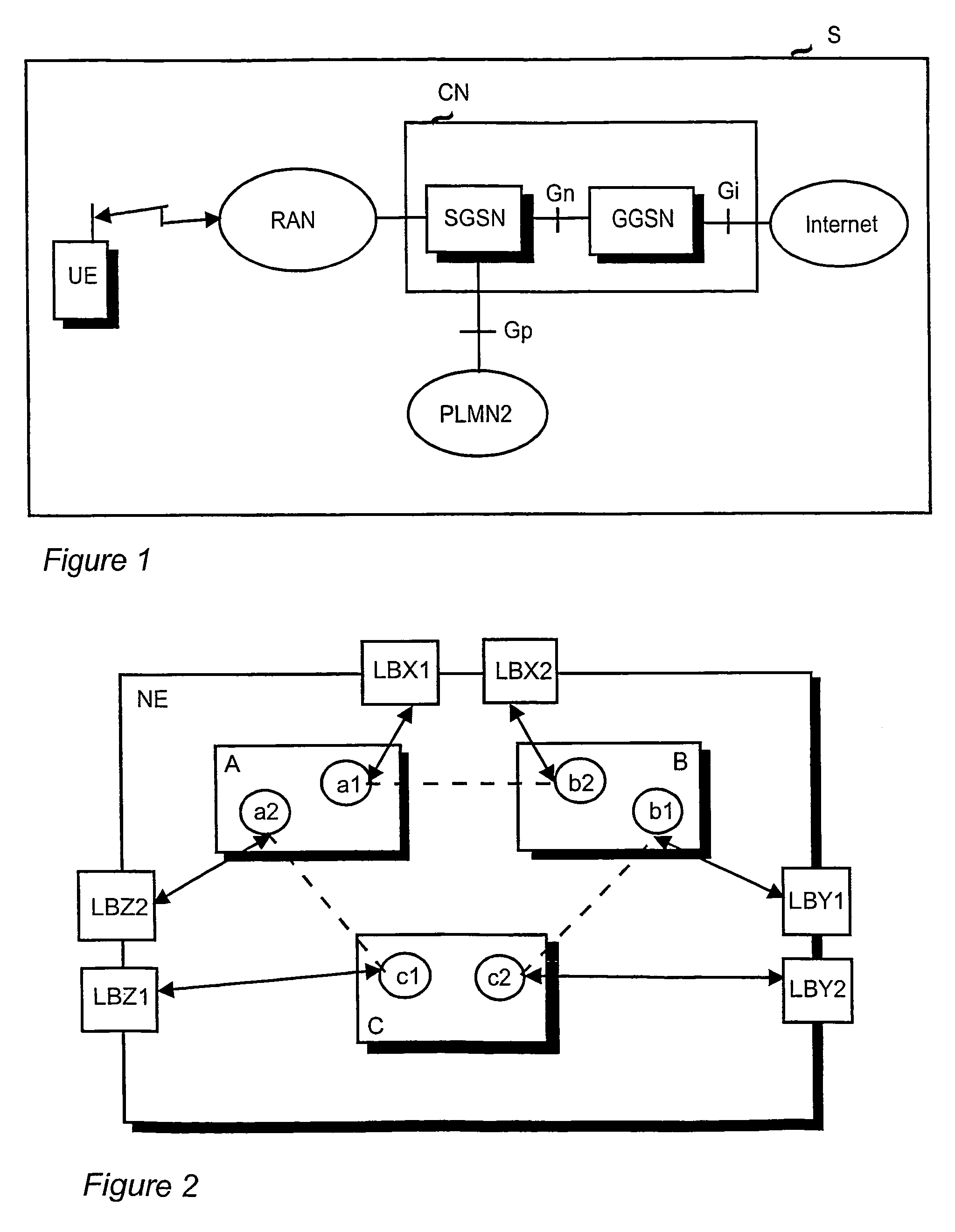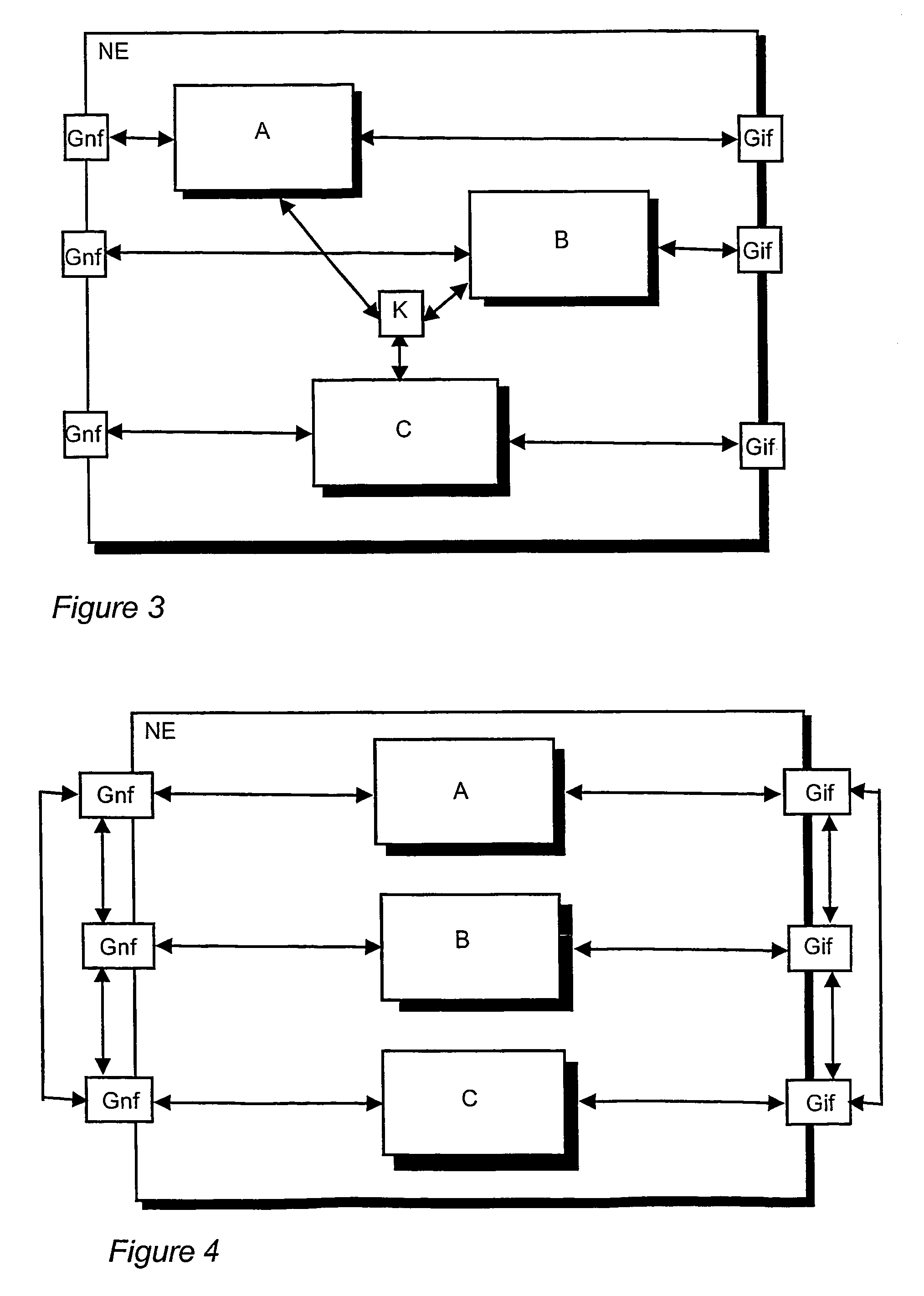Redundancy and load balancing in a telecommunication unit and system
a telecommunications unit and load balancing technology, applied in data switching networks, frequency-division multiplexes, instruments, etc., can solve the problems of heavy network node structure, waste of resources, and high cost, and achieve the effect of balancing network load, high availability and transmission rate reduction
- Summary
- Abstract
- Description
- Claims
- Application Information
AI Technical Summary
Benefits of technology
Problems solved by technology
Method used
Image
Examples
first embodiment
Implementation of the First Embodiment
[0033]The following describes, how the invention is implemented on the user plane.
[0034]FIG. 2 shows a network element NE, which is for instance a GGSN node. The network element comprises two or more physical GTP-U processing units A, B, C, which are herein also called cluster nodes. The cluster nodes A, B, C are capable of serving PDP contexts. The cluster nodes are arranged in pairs such that each cluster node can form a pair with every other cluster node. For instance, if the number of available cluster nodes N=3, the number of possible pairs P=3. If N=4, then P=6. In the situation shown in FIG. 2, the number of cluster nodes N=3, and the possible cluster node pairs are then AB, BC and CA. In each pair, the first cluster node is a backup unit of the second cluster node.
[0035]According to the present invention, the cluster nodes contain logical nodes a1, a2, b1, b2, c1, c2, which are also called virtual cluster nodes or virtual nodes. The numb...
second embodiment
Implementation of the Second Embodiment
[0053]The following describes a combined user plane and control plane implementation of the invention.
[0054]FIG. 5 shows a network element NE, which is for instance a GGSN node. The network element comprises two or more physical GTP-U processing units A, B, C, which are herein also called user plane cluster nodes, and two or more physical GTP-C processing units D, E, F which are herein also called control plane cluster nodes. The user plane and control plane cluster nodes A, B, C, D, E, F are capable of serving PDP contexts. According to the second embodiment of the invention, serving pairs are formed of the user plane and control plane cluster nodes such that a user plane cluster node and a control plane cluster node form a pair. In a serving pair, both of the nodes are active. Each user plane cluster node can form a pair with every control plane cluster node and vice versa. The serving pair has a backup pair on standby. Each backup pair can b...
PUM
 Login to View More
Login to View More Abstract
Description
Claims
Application Information
 Login to View More
Login to View More - R&D
- Intellectual Property
- Life Sciences
- Materials
- Tech Scout
- Unparalleled Data Quality
- Higher Quality Content
- 60% Fewer Hallucinations
Browse by: Latest US Patents, China's latest patents, Technical Efficacy Thesaurus, Application Domain, Technology Topic, Popular Technical Reports.
© 2025 PatSnap. All rights reserved.Legal|Privacy policy|Modern Slavery Act Transparency Statement|Sitemap|About US| Contact US: help@patsnap.com



